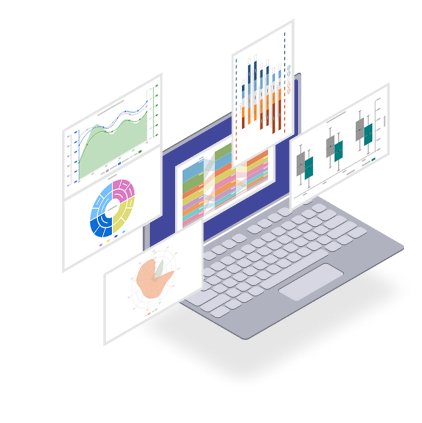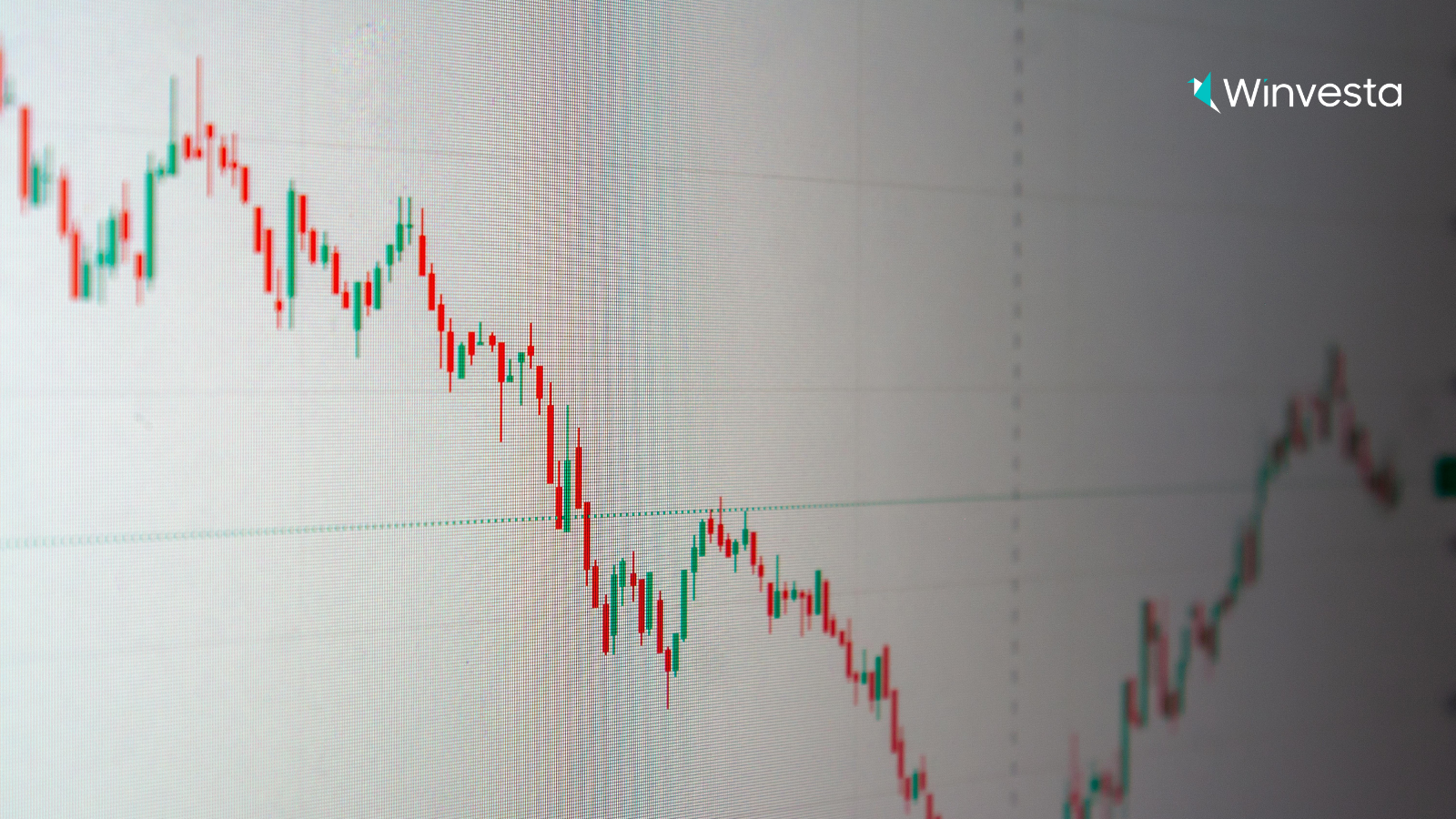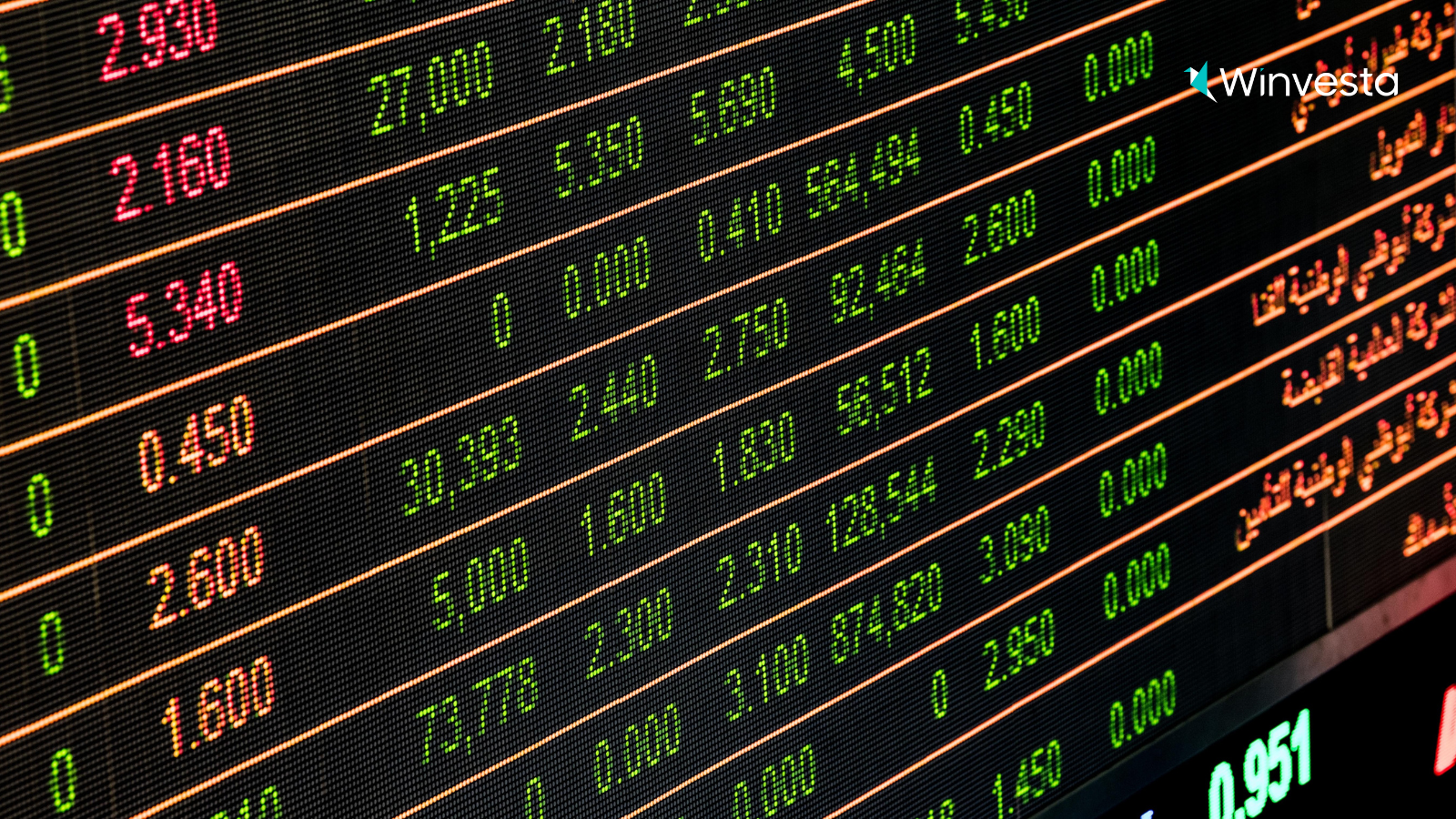Contents
How do macroeconomic factors shape the US stock market?
6 minutes read
06 June 2025

Picture this: You wake up, check your phone, and see that the US stock market is down 3% today. Your portfolio looks red across the board. What happened overnight? No company-specific news, no earnings disasters. The culprit? A surprise inflation report spooked investors.
This scenario plays out regularly in the US stock market. While company fundamentals matter, macroeconomic factors often drive the broader market movements that affect every investor's portfolio.
What are macroeconomic factors?
Macroeconomic factors are large-scale economic forces that impact entire economies, not just individual companies. Think of them as the weather system for financial markets. Just as weather affects everyone in a region differently, these economic forces influence various sectors and companies in unique ways.
These factors fall into several categories:
- Economic indicators (GDP, inflation, unemployment)
- Policy decisions (interest rates, government spending)
- External events (natural disasters, geopolitical tensions)
- Market sentiment drivers (consumer confidence, business outlook)
Understanding these forces enables investors to make more informed decisions. When you analyse macroenvironmental factors alongside company fundamentals, you gain a comprehensive understanding of investment opportunities and risks.
Why does the US stock market react to macro events
The US stock market serves as a giant pricing machine. It constantly processes new information and adjusts stock prices based on future expectations. When macroeconomic factors shift, they dramatically alter these expectations.
For example, when the Federal Reserve hints at raising interest rates, the entire market recalibrates. Growth stocks may decline as future earnings become less valuable. In contrast, financial stocks may rise as banks benefit from higher lending rates.
The US stock market now reflects not only current conditions but also investor predictions about where the economy is headed next. This forward-looking nature makes macro factors crucial for anyone serious about investing.
GDP: the economy's report card
Gross Domestic Product measures the total value of goods and services produced in the United States. Think of GDP as the economy's report card – it tells you whether the country is growing or shrinking.
The Bureau of Economic Analysis releases GDP data quarterly. Strong GDP growth signals a healthy economy where companies can increase sales and profits. This typically boosts stock prices across most sectors.
However, the relationship isn't always straightforward. Sometimes, strong GDP growth raises concerns about overheating, leading to fears of inflation or interest rate hikes. Savvy investors monitor GDP trends alongside other key indicators to gain a comprehensive understanding of the economic landscape.
Recent GDP data illustrate how this plays out in real time. During 2023, solid GDP growth supported stock market gains despite investors' concerns about other factors, such as inflation and geopolitical tensions.
Interest rates: the market's steering wheel
%20(36).png?width=1600&height=900&name=Blog%20images%20(2)%20(36).png)
Interest rates act like the steering wheel of the stock market. When interest rates are low, money tends to flow toward stocks as investors seek higher returns. When rates rise, bonds become more attractive alternatives, pulling money away from equities.
The Federal Reserve controls short-term interest rates through its federal funds rate. But the impact extends far beyond overnight lending between banks. Here's how rising rates affect stocks:
Company valuations shrink. Financial models use interest rates to calculate the present value of future earnings. Higher rates mean that future profits are worth less today, which reduces stock valuations.
Borrowing costs increase. Companies pay more to finance operations, expansion, and acquisitions. This directly impacts profit margins and growth plans.
Competition from bonds grows. When you can earn 5% risk-free in government bonds, that 2% dividend yield starts looking less attractive.
Growth companies feel this pain most acutely. A tech startup expecting profits five years from now sees its valuation hammered when rates rise. Meanwhile, value stocks with current earnings often hold up better.
Inflation: the silent portfolio killer
Inflation erodes purchasing power, but its impact on stocks is more complex than many realise. Moderate inflation often indicates a healthy and growing economy. But when inflation accelerates beyond the Federal Reserve's 2% target, trouble follows.
The Consumer Price Index (CPI) and Producer Price Index (PPI) measure inflation from different angles. CPI tracks what consumers pay for goods and services, while PPI measures costs at the producer level. Both indicators influence market sentiment and Federal Reserve policy decisions.
During periods of inflation, consumer behaviour shifts dramatically. People spend more on necessities, such as food, housing, and energy, leaving less for discretionary purchases. This hurts companies selling non-essential goods and services.
However, some sectors thrive during inflation:
- Energy companies benefit from higher commodity prices
- Real estate investment trusts (REITs) can raise rents
- Consumer staples maintain pricing power for essential goods
- Materials companies see input costs and selling prices rise together
The key is understanding which companies can pass higher costs to customers and which cannot.
Unemployment: the spending barometer
Employment levels directly impact consumer spending, which accounts for approximately 70% of the US economy's economic activity. When unemployment rises, consumer confidence falls, and spending drops across non-essential categories.
The monthly jobs report, released by the Bureau of Labour Statistics, offers crucial insights into the nation's economic health. Investors watch several key metrics:
- Unemployment rate
- Job creation numbers
- Average hourly earnings growth
- Labour force participation rate
Low unemployment typically supports stock prices as consumers have money to spend. However, extremely low unemployment can signal an overheating economy, potentially triggering concerns about inflation.
Different sectors react uniquely to employment data. Consumer discretionary stocks (such as restaurants, retail, and entertainment) are most sensitive to changes in the job market, while defensive sectors like utilities and healthcare exhibit less correlation.
Natural and human-made disruptions
Markets dislike uncertainty, and unexpected events can create significant uncertainty. Natural disasters, pandemics, wars, and other disruptions can rapidly reshape entire sectors.
The COVID-19 pandemic exemplifies this dynamic perfectly. In March 2020, the US stock market experienced its fastest bear market in history as investors grappled with unknown health and economic impacts. Yet by understanding which companies would benefit and which would suffer, savvy investors found opportunities.
Technology stocks soared as remote work became standard. Streaming services, cloud computing, and e-commerce platforms saw explosive growth. Meanwhile, airlines, cruise lines, and hospitality companies struggled for years.
These events often lead to lasting changes in consumer behaviour and business operations. The companies that adapt quickly usually emerge stronger, while those that resist change may never fully recover.
Economic factors of production and market dynamics
The economic factors of production – land, labour, capital, and entrepreneurship – influence stock market performance through supply and demand dynamics. When these factors become more expensive or scarce, it affects corporate profitability and economic growth.
For instance, when skilled labour becomes scarce, wages rise, which increases costs for companies but potentially boosts consumer spending. Similarly, when capital becomes expensive due to higher interest rates, companies may delay their expansion plans, which can impact future growth prospects.
Timing and market psychology
Understanding when the US stock market starts time matters for day traders, but long-term investors should focus on how macro factors develop over months and years. Economic trends rarely change overnight, giving patient investors time to position their portfolios accordingly.
Market psychology plays a massive role in how macro factors affect stock prices. Sometimes, markets overreact to minor economic data, creating temporary opportunities for investors. Other times, markets ignore significant economic changes until they become impossible to overlook.
The key is developing a framework for evaluating macro factors alongside individual stock analysis. This means:
- Monitoring key economic indicators regularly
- Understanding how different sectors respond to macro changes
- Maintaining a long-term perspective while staying flexible
- Diversifying across industries and asset classes

Ready to own a piece of the world’s biggest brands?
- Invest in 4,000+ US stocks & ETFs
- Fractional investing
- Zero account opening fees
- Secure and seamless
Start investing in just 2 minutes!

Build your global portfolio.
.png)
Invest in companies you love, like Apple and Tesla.

Track, manage, and grow your investments.
Building macro awareness into your investment strategy
Successful investing requires balancing company-specific research with macro awareness. You might find the perfect stock with excellent fundamentals. Still, if macro factors are working against that sector, your timing might be off.
Consider creating a simple macro dashboard tracking the key factors we've discussed:
- GDP growth trends
- Interest rate direction and expectations
- Inflation measures (CPI and PPI)
- Employment indicators
- Major geopolitical or natural events
This doesn't mean trying to time the market perfectly – that's nearly impossible. Instead, use macro awareness to:
- Adjust position sizes based on economic uncertainty
- Rotate between sectors as conditions change
- Maintain appropriate cash reserves during volatile periods
- Identify long-term themes and structural changes
The US stock market will continue reflecting the complex interplay between company fundamentals and macroeconomic forces. By understanding these relationships, you position yourself to make more informed investment decisions and build wealth over time.
Remember, no single factor determines market direction. Successful investors develop the skill to synthesise multiple macroeconomic inputs while maintaining a focus on long-term wealth building. The economy will cycle through various phases, but companies that adapt and grow through these cycles often reward patient investors handsomely.
Frequently asked questions about macroeconomics?


Contributed by Denila Lobo
Denila is a content writer at Winvesta. She crafts clear, concise content on international payments, helping freelancers and businesses easily navigate global financial solutions.



